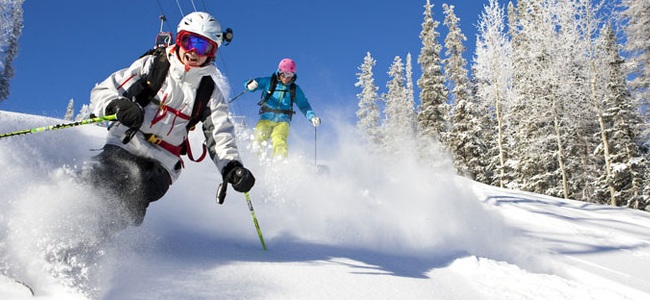

Skiing is amazing. Exhilarating exercise, crisp white snow, sunshine on the slopes, and of course the all-important apres-ski. Unfortunately though, where gravity, speed, and ice are involved, falls and injury can put an abrupt end to the fun and see you limping through the door of your physiotherapist when you return!
So how can you prepare yourself and your family and ensure the skiing adventure is not marred by an injury. Of course, you can't always avoid a fall or if someone sidelines you on the slopes, but you can prepare your body for the physical demands of skiing and take some simple steps to avoid the most common ski injuries from occurring.
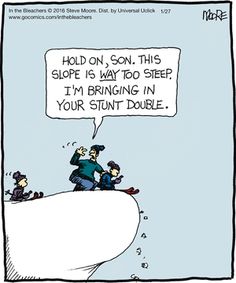
According to John Cole, an elite skiing performance and fitness coach, “training for injury prevention", should be something we all do, regardless of our age or level of skiing, as well as preparing our bodies and minds with good nutrition and sleep.
"Many of us will only go skiing once a year, putting our bodies under a lot more stress in that one week, than we do at any other time in the year!" says Alin Dorneanu, physiotherapist at the House Clinics, Bristol. "Skiing exerts a lot of pressure on the joints in our knees, lower back and arms, and we can't expect to avoid straining those joints if we don't prepare our bodies in advance. In an ideal world, you might start preparing 6 weeks in advance, but even if you do a few simple strength training exercises starting 2 weeks before you go, you'll be in a strong position to avoid injury and enjoy the skiing much more."
You may have heard horror stories about knee injuries, and for good reason. They account for around 40% of all ski injuries. The Medial Collateral Ligament (MCL) of the knee has always been the most common knee injury, as a twist of the knee often leads to an MCL sprain. Interestingly, there has been a dramatic rise in the number of knee ligament ruptures, particularly ruptures of the Anterior Cruciate Ligament ( ACL). Improvements in ski boots and bindings that have helped reduce ankle and shin injuries appear to have contributed to the increase in ACL injuries; Bindings are designed to protect the ankles and shins, but their release mechanisms are not fast enough to protect the knee from a sudden twisting injury.
1. Glute Bridge - Lie on an exercise mat, bend your knees and keep your feet flat on the floor. Peel up from your lower back to upper back so your shoulders and arms are supporting you, whilst ensuring your knees track forward and you can feel your weight in your feet. Repeat 10 times, and build up to 3 sets.
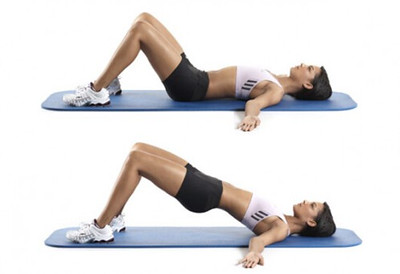
2. Lunges- Stand with feet hip-distance apart. Step forward and keep your front knee aligned over your ankle (don't allow it to go past your ankle) with your back knee dipping to hover just above the floor. You can alternate legs or do one side first and then the other. Aim to do 10 lunges on each side, and build up to 3 sets if you can.
.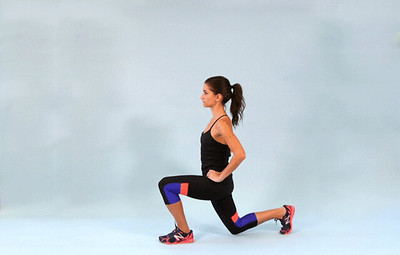
3.Wall Squat - You can do this freestanding if you wish, but using a pilates ball against a wall can be a more pleasant way to do squats. Place the ball behind you with feet hip distance apart, and start with the ball resting behind your mid-back. Roll down into the squat position, keeping knees aligned over ankles, then roll back up to standing. Repeat 10 times, and build up to a set of 3 if you can. For an extra challenge, you can hold on the last squat of each set and count to 5!
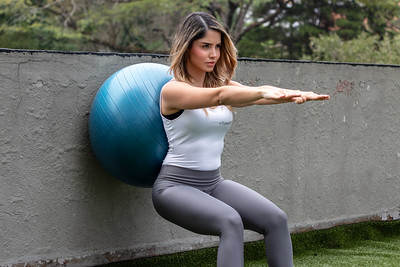
The Lower Back can also come under a lot of strain when you're skiing as well as jumping off ski-lifts and carrying all your heavy ski equipment! The best way to support your lower back is to do core strength exercises. Yoga and Pilates are excellent ways of doing this and there are plenty of free videos available online to help you focus on your core strength.
Try this short Pilates workout for pelvic stability, deep muscle activation and improved core strength before you go skiing...
Skiers will instinctively stretch out their arms to break a fall, which puts shoulders, arms, and hands at risk of fracture and strains. Skier’s thumb, for example, results from falling on an outstretched arm with a pole-in-hand, which can cause a ligament tear. Top Tip: Drop your poles when you’re going down!
Improving your overall fitness and core strength, as outlined above, can improve your risk of falling in the first place, but sometimes a fall can't be avoided and you can't control who might ski into you or cut you up! So check out this guide below to stay safe and avoid injury on the slopes this season...
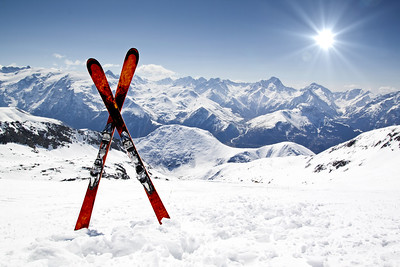
We love these tips from ABTA and GOV.UK on how to prepare for your ski holiday abroad....
Know your alcohol limits -
Alcohol affects your resistance and awareness of the cold and also impairs your judgment, coordination and reaction time. Drinking alcohol at altitude will affect you more quickly and your insurance cover may not be valid if you injure yourself or others whilst intoxicated.
Wear a Helmet -
Whilst wearing a helmet is a personal choice, more and more people are choosing to wear them. In many countries, it is a legal requirement for children to wear helmets. Remember, many insurance policies require you to wear a helmet on the slopes regardless of the local legal requirements.
Goggles and Sunscreen -
The sun is much stronger at altitude so appropriate strength sun cream should be worn. When it comes to eye protection there are two main options; ski goggles or sunglasses. Always ensure goggles or glasses offer 100% UV protection.
A comprehensive guide on appropriate eye wear, ski and snowboard clothing and equipment can be found at www.skiclub.co.uk.
Choose the right pistes/routes -
It is important to be aware of how pistes are classified to indicate their difficulty. This will make sure you don’t overstretch yourself and get into a tricky situation. Know your limits and don’t attempt slopes beyond your level of ability.
Green is the easiest, followed by Blue then Red and then Black. Itineraries are runs marked on the piste map but they are not groomed or patrolled and are therefore for the more experienced skiers.
Be aware that piste classifications vary in different ski resorts and countries. Piste conditions change during the day; what was a cruising blue run mid-morning could be difficult, and more like a hard red by 4 pm. Note that this also works in reverse, and sometimes a quiet red at the end of the day may be a lot easier than an icy and crowded blue.
We also love this Get Fit for Ski exercise routine from Ski Club Great Britain.
Sources:
Skiclub UK, ABTA Winter Sports, GOV UK, SKIMAG.COM